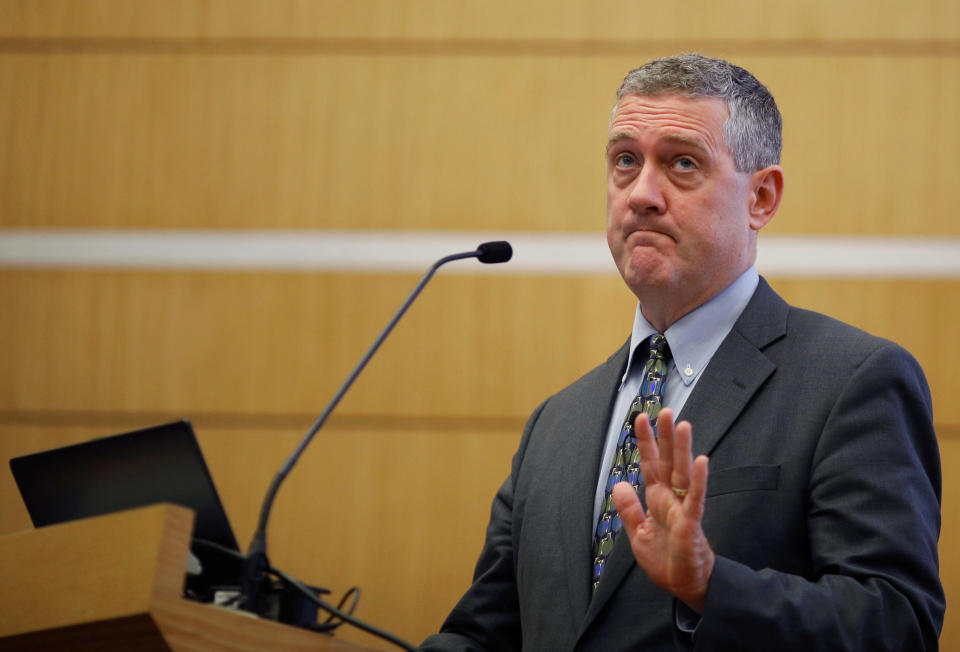Fed officials acknowledge concerns over balance sheet normalization

Key Federal Reserve officials said Friday that they are aware of the central bank’s continued effort to shrink its massive holdings of U.S. Treasuries and mortgage-backed securities.
Their remarks come days after the Fed released minutes from its January policy-setting meeting, where the central bank acknowledged that market volatility in late December was partly triggered by communications regarding the balance sheet.
After the December meeting, markets turned sour on the interpretation that the Fed would not be flexible on its $50-billion-per-month pace of asset roll-offs. Powell backtracked in early January when he said the Fed “wouldn’t hesitate” to change its program if doing so would preserve its progress toward maximum employment and price stability.
This week, the Fed’s balance sheet fell below the $4 trillion mark for the first time since 2013.
At a conference in New York on Friday, Fed officials noted that the balance sheet unwind process has not been like “watching paint dry,” as Philadelphia Fed President Patrick Harker notably said in 2017.
Fed Vice Chairman Randal Quarles said that “the times have changed” and noted that market participants were fairly sensitive to the central bank’s unwind process.
“I was a little surprised and puzzled by December,” Quarles said.
Quantitative tightening: relatively minor?
St. Louis Fed President James Bullard argued that shrinking the Fed balance sheet should have a relatively small macroeconomic effect, in part because of the fact that the process is being done with interest rates that are not at the zero bound.

Bullard’s thesis: the Fed’s process of buying assets during the Ben Bernanke-era (known as “quantitative easing”) had a huge effect because rates were at the zero-bound and therefore included the added potency of signaling to market participants that the central bank was committed to “lower for longer” monetary policy.
But with the benchmark interest rate now near most policymakers’ estimates of the neutral run rate of the economy, Bullard argues that shrinking the balance sheet does not have “equal and opposite effects” from quantitative easing.
“One may view the effects of unwinding the balance sheet as relatively minor,” Bullard said.
The Fed has not said exactly how small of a balance sheet it would ultimately like to have, but officials have said they would generally like to target a balance sheet that’s larger than it was before the financial crisis.
Looking ahead, many Fed officials have said they could see the Fed ending the balance sheet runoff by the end of this year.
Philadelphia Fed President Patrick Harker joined that chorus on Friday in saying he could see the unwind process ending “later this year.” Harker then noted that the Fed should take a “slow and steady” approach to finishing the normalization process by gradually diminishing the Fed’s reserves after it ends the asset roll-off itself.
Figuring out the final balance sheet
Quarles and Bullard also offered their thoughts on the mix of the final balance sheet. Quarles said he would prefer the Fed shift its holdings of Treasury securities toward shorter-term assets. As part of the Bernanke effort to tackle the housing crisis and prop up the longer-term end of the yield curve, the Fed’s current balance sheet is a mix of mortgage-backed securities and longer-term Treasuries.
Bullard said the ideally “neutral” balance sheet would be comprised of Treasuries that match the portfolio in the U.S. Treasury itself.
“That would keep you completely out of the idea of favoring any particular sector of the yield curve or particular sector of the economy,” Bullard said.
Bullard is a voting member of this year’s Federal Open Market Committee that decides monetary policy, on which Quarles is a permanent member. Harker is an alternate.
Brian Cheung is a reporter covering the banking industry and the intersection of finance and policy for Yahoo Finance. You can follow him on Twitter @bcheungz.
Read more:
Fed officials not 'complacent' with inflationary pressures
New study argues US bank CEOs make too much money
JPM Coin calls attention to the great blockchain arms race
Rubio wants 'preference' for corporate reinvestment over stock buybacks
Congress may have accidentally freed nearly all banks from the Volcker Rule
